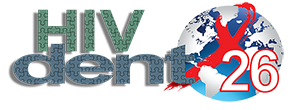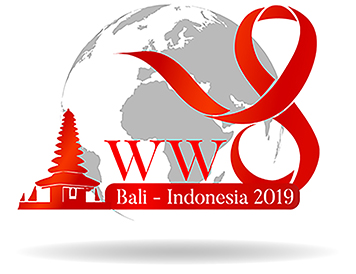|
Indah Suasani Wahyuni,1 Etis Duhita Rahayuningtyas,2 Irna Sufiawati1
Oral Medicine Department, Faculty of Dentistry, Universitas Padjadjaran, Bandung, Indonesia.
Oral Medicine Residency Program, Faculty of Dentistry, Universitas Padjadjaran, Bandung, Indonesia.
Abstract
Introduction: Early detection of HIV-related oral diseases can be used to diagnose human immunodeficiency virus (HIV) infection especially in individuals with high risk factors. The purpose of this paper is to describe oral findings as the potential first signs of HIV infection and to suggest an effective approach of provider-initiated testing and counselling (PITC) in dental setting.
Case Report and management: A 42-year-old man came to the oral medicine department with discomfort s in his throat that had started a week before. The extraoral examination identified chronic dermatitis, anaemic conjunctiva, dry lips, enlarged right cervical lymph node, and significant weight loss. The intraoral examination revealed oral opportunistic infections strongly associated to HIV including oropharyngeal candidiasis (OPC) and mild oral hairy leukoplakia (OHL). Haematological examination revealed decreased haemoglobin, haematocrit, erythrocyte count and lymphocytes, but an increase in erythrocytes sedimentation rate (ESR) and eosinophil levels. Microbiological examination found hyphae from the throat swab. The patient was given initial treatment that included multivitamin and nystatin oral suspension 100,000 IU/ml 4 times a day for two weeks: the oral lesions showed an improvement but were not completely healed yet. Fluconazole was added to the drug regimen; 300mg/day single dose at first day followed by Fluconazole 150 mg/day single dose for two weeks. Patient was also given PITC.
The only declared risk factors for this patient acquiring HIV acquisition was sexual intercourse with his partner. HIV tests revealed positive results and the CD4 count was 18 cells/mm3. The oral lesions completely resolved following the treatment. The patient was started on a course of antiretroviral therapy by an Internist.
Conclusion: Early recognition of oral diseases strongly associated with HIV are important predictors of HIV infection in individuals with an unknown HIV status. Dentists have an important role in PITC to recognise these diseases in order to facilitate early HIV diagnosis and referral for a rapid initiation of antiretroviral therapy.
Keywords: HIV, oropharyngeal candidiasis, oral hairy leukoplakia, PITC. |



